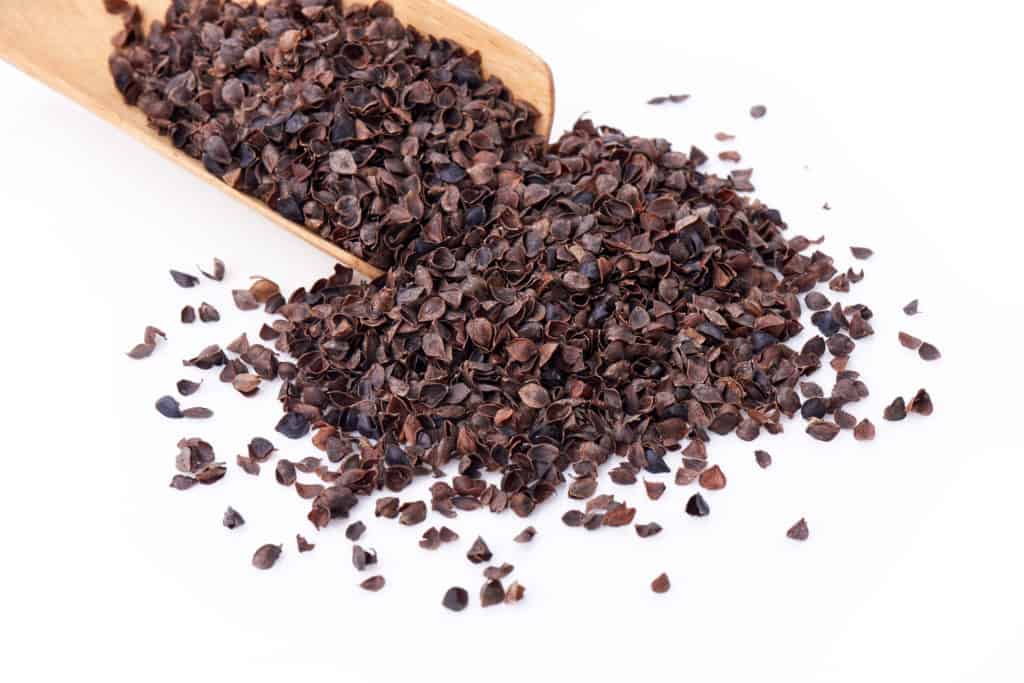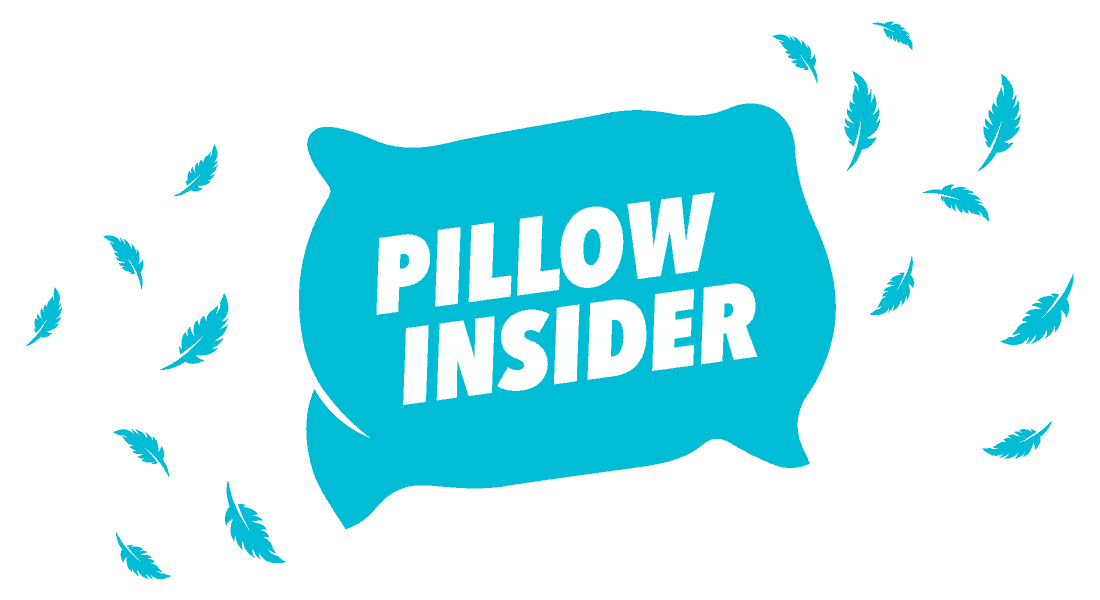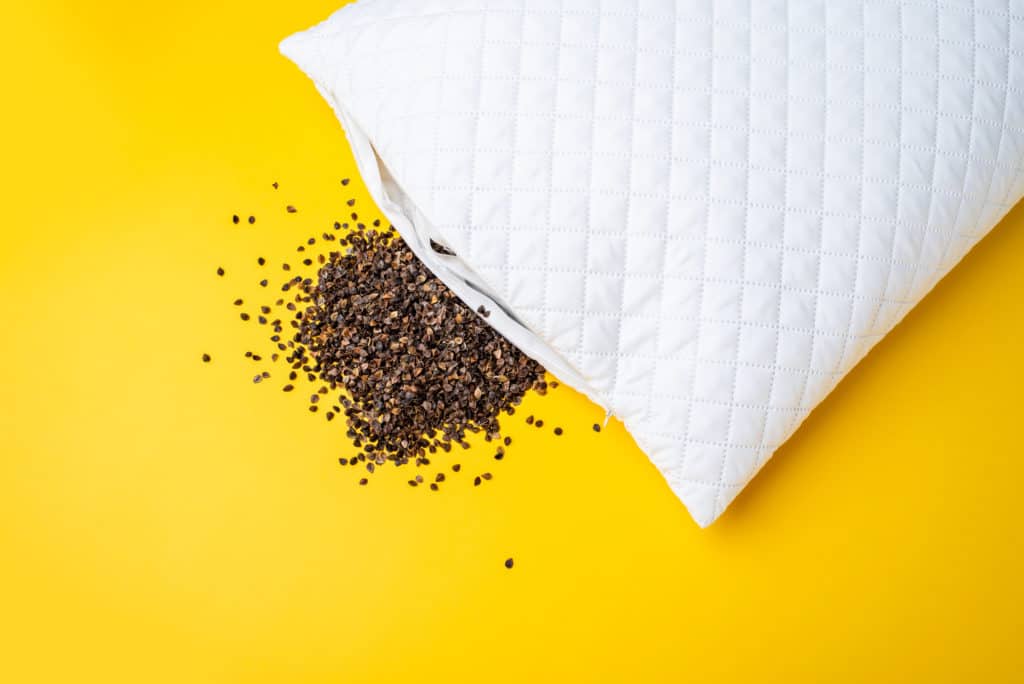Buckwheat pillows are different from your average pillow, because instead of soft and spongy materials, these pillows are stuffed with the hulls of buckwheat seeds. This traditional Japanese pillow offers a lot of firm support and can be very comfortable to sleep on, with the buckwheat shells moving around to contour your shape, but are not the most intuitive to clean. Here’s our step-by-step guide to how to clean buckwheat pillows.
If you love a firm pillow or if you’re a stomach sleeper, these can help you enjoy better sleep and lots of users feel that they offer great muscle support, reduce snoring, promote airflow, keep you nice and cool and even prevent migraines.
With proper care, this natural product can last up to 10 years. If you want your pillow to last, then one of the first things you should learn is how to clean buckwheat pillows.
How to Clean Buckwheat Pillows Step-by-Step
It’s important to keep your pillow stuffing dry at all times. If buckwheat gets saturated, it can become brittle and weak and your pillow won’t offer the needed support anymore. Moist hulls can also result in mold growth that can be terrible for your health.
The buckwheat filling can’t be washed but you’ll occasionally need to wash the pillow cover.
Here’s a quick look at the steps to follow if you want to clean your buckwheat pillow without damaging it:
Step 1: Remove the Buckwheat Hulls
Buckwheat hull pillows are usually adjustable and come with a handy zipper at the side that you can use to remove or add stuffing. Grab a large container and place a plastic or paper grocery bag inside. Open the pillow cover and pour out all of the buckwheat hulls.
Turn the outer casing inside out so you can be sure to remove every single shell from the case. Be careful not to spill the filling because they can be difficult to sweep up.
Step 2: Wash the Cover
Once the hulls have been removed, you can wash the pillowcase.
First, check the case for stains and use a stain remover to treat the spot. Next, toss the case into the washing machine. Organic buckwheat hull pillows usually have a cotton casing because cotton assists with air circulation and in keeping your buckwheat hull filling dry. Cotton can shrink if you wash it in hot water which means it’s best to cold wash your pillow.
Wash the pillow in cold water along with other linens of the same color. The organic cotton cover is pretty resilient and usually doesn’t require a gentle cycle. You can use any type of laundry detergent to wash cotton and a bit of fabric softener can make it feel softer and will offer a rich linen scent.
Step 3: Air Dry
It’s best to keep the pillow cover out of the dryer since warm temperatures can make the cotton fabric shrink. Air-dry the outer cover by hanging it on a rail or wire and wait until it has completely dried.
Step 4: Refill
You can refill the case once it has fully dried off. It’s best to ask a friend to hold the pillowcase for you while you pour the buckwheat hulls back into the case. Be careful not to waste the hulls and zip the pillowcase shut before placing it back inside the pillow protector.
Frequently Asked Questions
Asking the right questions can help you take much better care of your natural pillows. Here are a couple of questions buckwheat pillow users often ask.
Q: Can Buckwheat Hulls Be Washed?
A: It isn’t necessary to wash the buckwheat hulls as long as you clean the outside of the pillow. Some people do rinse the hulls after about 10 years to remove the dust but it usually isn’t required or recommended. You should also avoid using a pillow mist since these can weaken the hulls.
Buckwheat filling can’t be washed and shouldn’t get wet. The hulls don’t absorb water well, but exposing the hulls to moisture can weaken them which could make them brittle and prone to breaking. This can reduce the durability of your stuffing. Only the exterior of buckwheat pillows should be washed.
If you do happen to spill liquids on the pillow, you can empty the contents in a bucket and let the hulls sit indoors under a gently circulating fan or leave the moist hulls in direct sunlight for a while. Try to spread the hulls out on a flat surface so they can properly dry out before putting them back into the pillowcase.
Q: When Should I Replace the Buckwheat Hulls?
A: Buckwheat hulls will gradually break up into smaller pieces which can make the pillow feel flat.
It usually takes a couple of years before the hulls will reach a point where they no longer provide support. When the hulls have broken down and the pillow no longer offers support, you can consider replacing it with a fresh new pillow.
Here are a couple of signs that your pillow might need replacing:
- The hulls lost their rough edges and don’t grip one another well anymore.
- The air pockets between the hulls are smaller since they’re crushed flat.
- The pillow doesn’t feel breathable or cool anymore.
- The pillow feels flatter than usual.
Buckwheat filling is usually sold in large quantities. If the hulls have become flat, you can choose to refill your old pillowcase with new hulls or get a new pillow entirely.

Q: How Often Should Buckwheat Pillows Be Cleaned?
A: Buckwheat pillows are naturally hypoallergenic and dust mite resistant, but even these pillows will need an occasional clean. This is because the natural oils and sweat from your skin will eventually seep through the pillowcase and could reach the pillow cover.
It’s best to place your cooling pillow inside a pillow cover so you can keep the pillow clean and stain-free for as long as possible.
When you carefully use your pillow along with a pillow protector, you’ll only need to wash the pillow cover once every 6 months. Without a pillow cover, you’ll need to wash it every 3 months.
Bottom Line
Learning how to clean buckwheat pillows helps to keep the casing and filling in great condition for longer.

